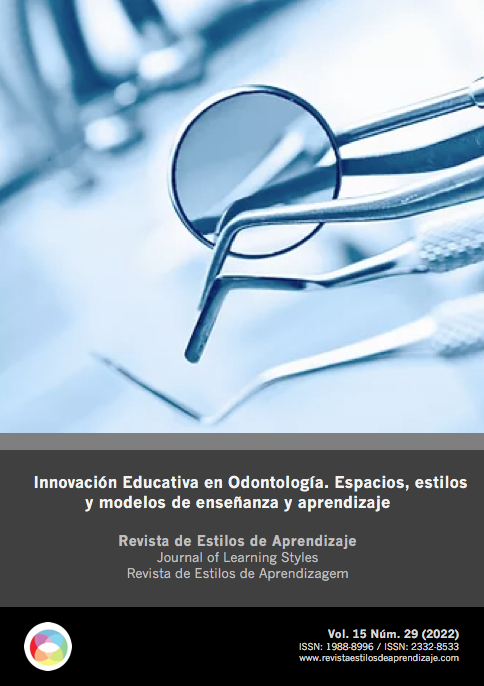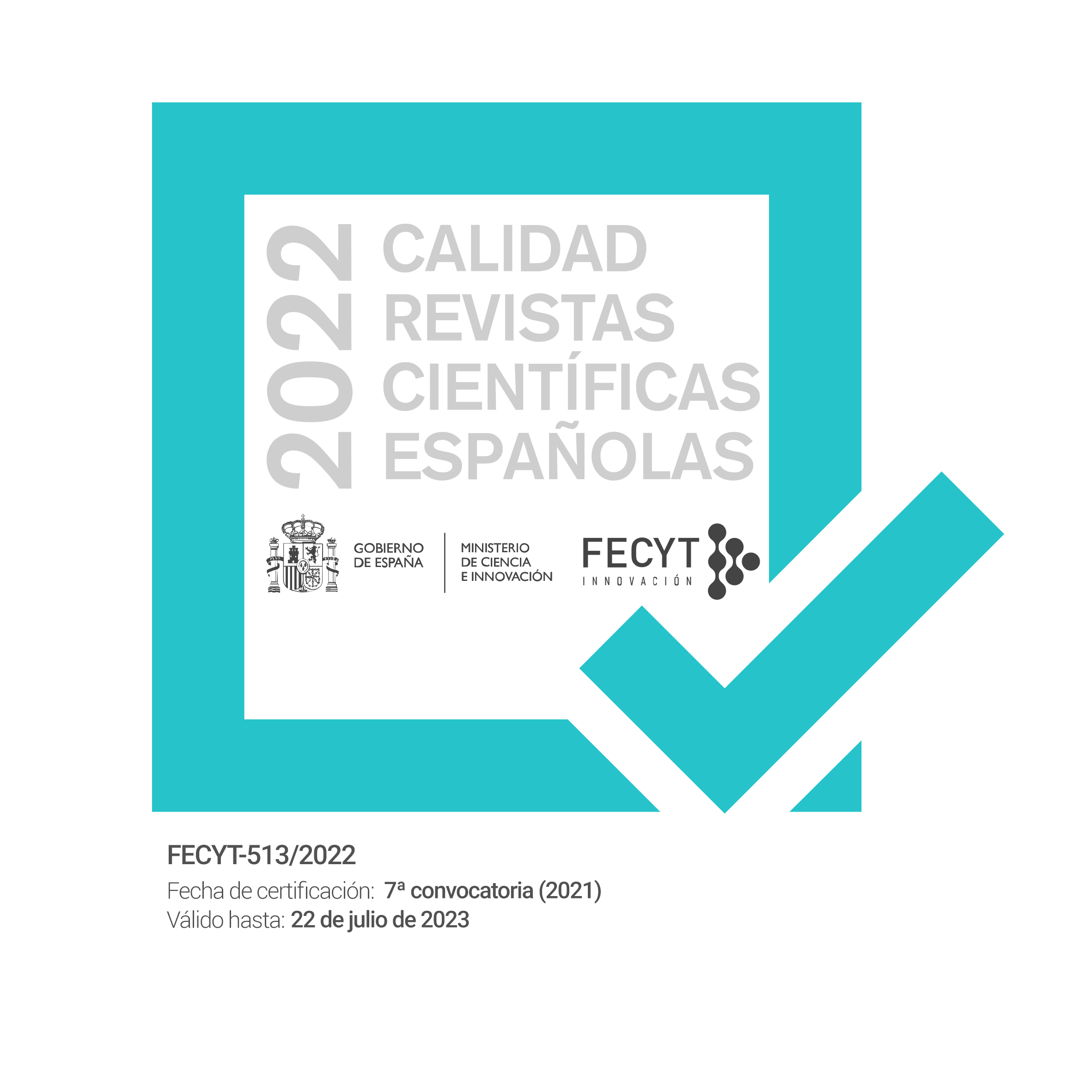Transformation of the university educational space through Musical Flow on undergraduate dental students during the COVID-19 pandemic: a pilot study
DOI:
https://doi.org/10.55777/rea.v15i29.4130Keywords:
Anxiety, University, Students, Music, Musical FlowAbstract
Dental students are subjected to high levels of stress and anxiety. Music has been used in various fields to improve attention and performance in students. The aim of this pilot study was to test how the incorporation of Musical Flow project into clinical activity can control anxiety levels, improving the educational experience during the dental practice of undergraduate dental students. 119 students with different nationalities in 5th year of dentistry were included and divided into two groups: group I (n=63) listened to music; group II (n=56) did not listen to any type of music and acted as a control. Using a Visual Analogue Scale (VAS) and a questionnaire filled in by the students, we recorded their degree of pre- and post-operative anxiety and the influence of music during their clinical practice. 86% considered music as useful tool to decrease their anxiety; for 89% it could improve their clinical practice. Group I experienced a decrease in anxiety according to VAS of 1.76 points; group II of 0.85 points. COVID-19 increased students' anxiety by 58%. The incorporation of the Musical Flow during clinical practice may decrease their level of anxiety, improving the development of their clinical activity.
Downloads
References
Alzahem, A., van der Molen, H., Alaujan, A., Schmidt, H. & Za-makhshary, M. (2011). Stress amongst dental students: a systematic review. Eur J Dent Educ, 15(1), 8-18.
Al-Sowygh, Z., Alfadley, A., Al-Saif, M. & Al-Wadei, S. (2013). Perceived causes of stress among Saudi dental students. King Saud University Journal of Dental Sciences, 4(1), 7-15.
Appukuttan, D., Vinayagavel, M., & Tadepalli, A. (2014). Utility and validity of a single-item visual analog scale for measuring dental anxiety in clinical practice. J Oral Sci, 56, 151-6.
Báez, A. (2018). Inteligencia emocional y estilos de aprendizaje aplicados en el grado universitario de turismo en Tenerife. Revista De Estilos De Aprendizaje, 11(22).
Basudan, S., Binanzan, N. & Alhassan, A. (2017). Depression, anxiety, and stress in dental students. International Journal of Medical Education, 8, 179-186.
Bharadwaj, R. (2017). Effect of Music Therapy os Stress and Anxiety of University Students. International Journal for Innovate Research in Multidisciplinary Field, 3(5).
Bradt, J., Dileo, C. & Potvin, N. (2013). Music for stress and anxiety reduction in coronary heart disease patients. Cochrane Database of Systematic Reviews. Issue 12. Art. No.: CD006577. DOI: 10.1002/14651858.CD006577.pub3.
Di Nasso, L., Nizzardo, A., Pace, R., Pierleoni, F., Pagavino, G. & Giuliani, V. (2016). Influences of 432 Hz Music on the Perception of Anxiety during Endodontic Treatment: A Randomized Controlled Clinical Trial. Journal of Endodontics, 42(9), 1338-1343. https://doi.org/10.1016/j.joen.2016.05.015.
García, Y., Morales, S. & Rodríguez, V. (2020). Abordaje de experiencias educativas digitales ante la crisis del COVID-19 en el contexto universitario con el alumnado de diversidad funciona. Revista De Estilos De Aprendizaje, 13(20).
Generali, L., Iani, C., Macaluso, G., Montebugnoli, L., Siciliani, G. & Consolo, U. (2020). The perceived impact of the COVID-19 pandemic on dental undergraduate students in the Italian región of Emilia-Romagna. Eur J Dent Educ, 25(3), 621-633. https://doi.org/10.1111/eje.12640.
Ghasemi, M., Lotfollahzadeh, H., Kermani-Ranjbar, T. & Javad, M. (2017). Effect of Music Practice on Anxiety and Depression of Iranian Dental Students. J Dent (Tehran), 14(3):138-143.
Gupta, A. & Ahmed, B. (2020). Experience of listening to music on patient anxiety during minor oral surgery procedures: a pilot study. British dental Journal, 228(2), 89-91. https://doi.org/10.1038/s41415-019-1162-1.
Keilani, C., Simondet, N., Maalouf, R., Yigitoglu, A., Bougrine, A., Simon, D., ... Fligny, I. (2017). Effects of music intervention on anxiety and pain reduction in ambulatory maxillofacial and otorhinolaryngology surgery: a descriptive survey of 27 cases. Oral and maxillofacial surgery, 21 (2), 227-232. https://doi.org/10.1007/s10006-017-0616-3.
Khan, S., Ibrahim, S., Butt, R., Ahmed, B. & White, D. (2020). The influence of gender on career aspira tions of University of Birmingham dental students and junior trainees in the West Midlands. British Dental Journal, 228(12), 933-937. http://dx.doi.org/10.1038/s41415-020-1704-6
Khanagar, S., Al-Ehaideb, A., Jamleh, A., Ababneh, K., Maganur, P. & Vishwanathaiah. (2021). Psychological Distress among Undergraduate Dental Students in Saudi Arabia and Its Coping Strategies: A Systematic Review. Healthcare, 9, 429. https://doi.org/10.3390/healthcare9040429.
Kim, YK., Kim, SM., & Myoung, H. (2011). Musical intervention reduces patients' anxiety in surgical extraction of an impacted mandibular third molar. Journal of oral and maxillofacial surgery, 69 (4), 1036-1045. https://doi.org/10.1016/j.joms.2010.02.045.
Kumar, N., Wajidi, M., Chian, Y., Vishrooti, S., Ravindra, S. & Aithal, A. (2016). The effect of listening to music on concentration and academic performance of the student: Cross-sectional study on medical undergraduate students. Research Journal of Pharmaceutical, Biological and Chemical Sciences, 7(6),1190-1195.
Kupeli, I., & Gülnahar, I. (2020). Comparing Different Music Genres in Decreasing Dental Anxiety in Adolescents Who Underwent Third Molar Tooth Surgery in Turkey - Randomized Controlled Trial. Journal of oral and maxillofacial surgery, 78(4), 546.e1-546.e7. https://doi.org/10.1016/j.joms.2019.11.029.
Malakoutikhah, A., Dehghan, M., Ghonchehpoorc, A., Parandeh, P., & Honarmand, A. (2020). The effect of different genres of music and silence on relaxation and anxiety: A randomized controlled trial. Explore (New York, N.Y.). https://doi.org/10.1016/j.explore.2020.02.005.
Nilsson, U. (2008). The Anxiety- and Pain-Reducing Effects of Music Interventions: A systematic Review. AORN Journal, 87(4), 780-807. https://doi.org/10.1016/j.aorn.2007.09.013.
Prinz, P., Hertrich, K., Hirschfelder, U. & de Zwaan M. (2012). Burnout, depression and depersonalisation--psychological factors and coping strategies in dental and medical students. GMS Z Med Ausbild, 29(1): Doc10.
Schlaug, G. (2015). Musicians and music making as a model for the study of brain plasticity. Progress in brain research. 37-55. http://dx.doi.org/10.1016/bs.pbr.2014.11.020.
Yildirim, T. & Atas, O. (2021). The evaluation of psychological state of dental students during the COVID-19 pandemic. Braz. Oral Res. 35: e069 .

Downloads
Published
How to Cite
Issue
Section
License
By submitting the original, the author(s) declare that they are aware of and accept, in full, the privacy policy as well as the copyright of the Learning Styles Magazine.
The Learning Styles Magazine offers free and open access to its content, completely free of charge, in order to bring scientific research to its readers and society in general. All digital contents are free and open access and are published under a Creative Commons license:

Rights are granted under the Creative Commons Reconocimiento-NoComercial-SinObraDerivada 4.0 Internacional (CC-BY-NC-ND 4.0)
The Learning Styles Magazine is an open access journal. Publication of articles or reviews in the Journal does not entitle you to any remuneration. For authors as well as readers, the journal is free Creative Commons Reconocimiento-NoComercial-SinObraDerivada 4.0 Internacional (CC-BY-NC-ND 4.0).
With this licence, the reproduction and dissemination of the contents of the magazine for educational, social and knowledge transmission purposes is permitted, without any profit motive in mind, provided that the source and authorship are not modified. The licence granted to Learning Styles Magazine allows the copying and distribution of the magazine's contents, as long as the authorship of the work is recognised, correctly specifying the author and the publishing entity. The work may not be used for commercial purposes, nor may it be altered, transformed or generated from this work.
The publication of articles or reviews in the Journal does not give the right to any remuneration.
The Learning Styles Journal invites the author/authors to increase the visibility and scope of their articles published by re-disseminating them in:
- Web spaces and personal networks, as well as in scientific meetings and forums
- Open institutional archives in Universities, educational repositories and Research Centres.
- Academic and scientific networks (Researchgate, Academia.edu, Plubons, etc.)
All these spaces and publications must include all the bibliographic data of the publication.
























